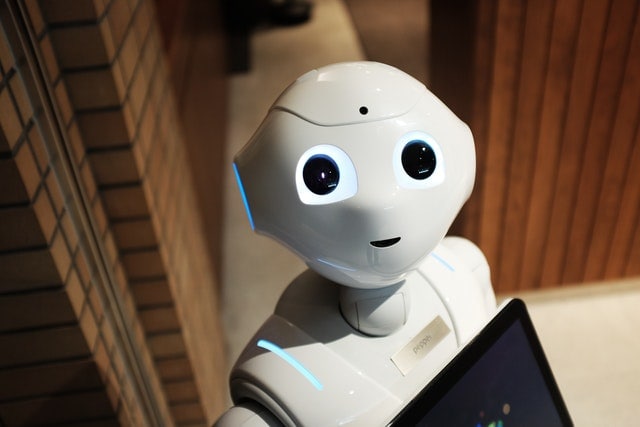What Is Artificial Intelligence: The artificial intelligence (AI) technique is defined as a process of programming a computer to make decisions for itself.
This can be done in a number of ways, including but not limited to rule-based systems, decision trees, genetic algorithms, artificial neural networks, and fuzzy logic systems. The goal of AI is to create a system that can learn and adapt on its own, without human intervention.
Some of the benefits of using AI techniques include:
- Increased efficiency – By automating tasks that would normally be done by humans, AI can help to increase the overall efficiency of a process.
- improved decision making – AI can provide insights and recommendations that humans may not be able to see.
- Reduced costs – In many cases, AI can be used to automate tasks that would normally require human labor, which can help to reduce the overall cost of a process.
- Increased accuracy – In some cases, AI systems may be able to achieve higher levels of accuracy than humans. This is particularly true in cases where the data set is large and complex.
- Increased speed – AI systems can often operate at speeds that are not possible for humans. This can be beneficial in situations where time is of the essence.
Several subfields within AI include machine learning, natural language processing, and computer vision. Machine learning is a subset of AI that deals with the creation of algorithms that can learn from data and improve their accuracy over time without being explicitly programmed to do so.
Natural language processing is another subfield of AI that deals with the ability of computers to understand human language and respond in a way that is natural for humans. Computer vision is the third subfield of AI and deals with the ability of computers to interpret and understand digital images.
History of Artificial intelligence (AI)-
The history of AI can be traced back to the early 1950s when a group of researchers at Dartmouth College developed a program called “Dartmouth Geometry Theorem Prover” or “DTGP”. This program was designed to automatically prove geometric theorems by using a set of rules and axioms that were provided by the user.
However, the DTGP program was not very successful in proving theorems and was only able to prove a limited number of theorems.
In the late 1950s, another group of researchers at Carnegie Mellon University developed a program called “Newell-Simon Human Problem Solver” or “HPS”.
This program was designed to solve problems by using a set of rules that were provided by the user. The HPS program was more successful than the DTGP program and was able to solve a wide range of problems.
In the early 1960s, a group of researchers at Stanford University developed a program called “SHRDLU”. This program was designed to understand natural language commands and execute them. However, the SHRDLU program was not very successful in understanding natural language commands and was only able to understand a limited number of commands.
Image credits- pexels
In the early 1970s, a group of researchers at Stanford University developed a program called “STRIPS”. This program was designed to plan actions by using a set of rules that were provided by the user.
The STRIPS program was quite successful in planning actions and was used in a number of real-world applications.
In the early 1990s, a group of researchers at Stanford University developed a program called “COGS”. This program was designed to simulate the human brain by using a set of rules that were provided by the user. The COGS program was quite successful in simulating the human brain and was used in a number of real-world applications.
In the early 2000s, a group of researchers at Stanford University developed a program called “Stanford Parser”. This program was designed to parse natural language by using a set of rules that were provided by the user. The Stanford Parser was quite successful in parsing natural language and was used in a number of real-world applications.
In the early 2010s, a group of researchers at Google developed a program called “Google Translate”. This program was designed to translate text from one language to another by using a set of rules that were provided by the user.
The Google Translate program was quite successful in translating text from one language to another and was used in a number of real-world applications.
Artificial intelligence is a field of computer science and engineering focused on the creation of intelligent agents, which are systems that can reason, learn, and act autonomously.
AI research deals with the question of how to create computers that are capable of intelligent behavior.
Types Of Artificial Intelligence: weak AI vs strong AI
Weak AI is the more common type of artificial intelligence and it is what most people think of when they think of AI. Strong AI is still in development and is not as widely used as weak AI.
However, strong AI has the potential to be much more powerful than weak AI. Weak AI is based on rule-based systems. This means that it uses a set of rules to determine how it will act in a given situation.
Image credits- pexels
The rules are typically quite simple and they can be changed as needed. This type of AI is good at completing specific tasks, but it is not very flexible. It can only do what it is programmed to do.
Strong AI, on the other hand, is based on learning algorithms. This means that it can learn from data and experiences. It is much more flexible than weak AI and can be used for a variety of tasks.
Strong AI is still in development and is not as widely used as weak AI. However, strong AI has the potential to be much more powerful than weak AI.
Quick Links:
- Where is Artificial Intelligence Used Today? Powerful Examples Of Artificial Intelligence In Use Today
- What is the Difference Between Artificial Intelligence (AI) and Machine Learning
- What Is GPT-3 And Why Is It Changing the Face of Artificial Intelligence?
Conclusion- What Is Artificial Intelligence
Artificial intelligence is a technique that allows machines to learn and work on their own. The potential for AI implementation is vast, and businesses are taking notice.
In this blog post, we’ve discussed what artificial intelligence is and how it works. We’ve also looked at some of the ways businesses are using AI to improve their marketing strategies.
If you’re looking for ways to implement AI in your business, or if you want to know more about how it can help you grow, contact us today.
Our team of experts would be happy to discuss your specific needs and help you get started with this exciting new technology.







